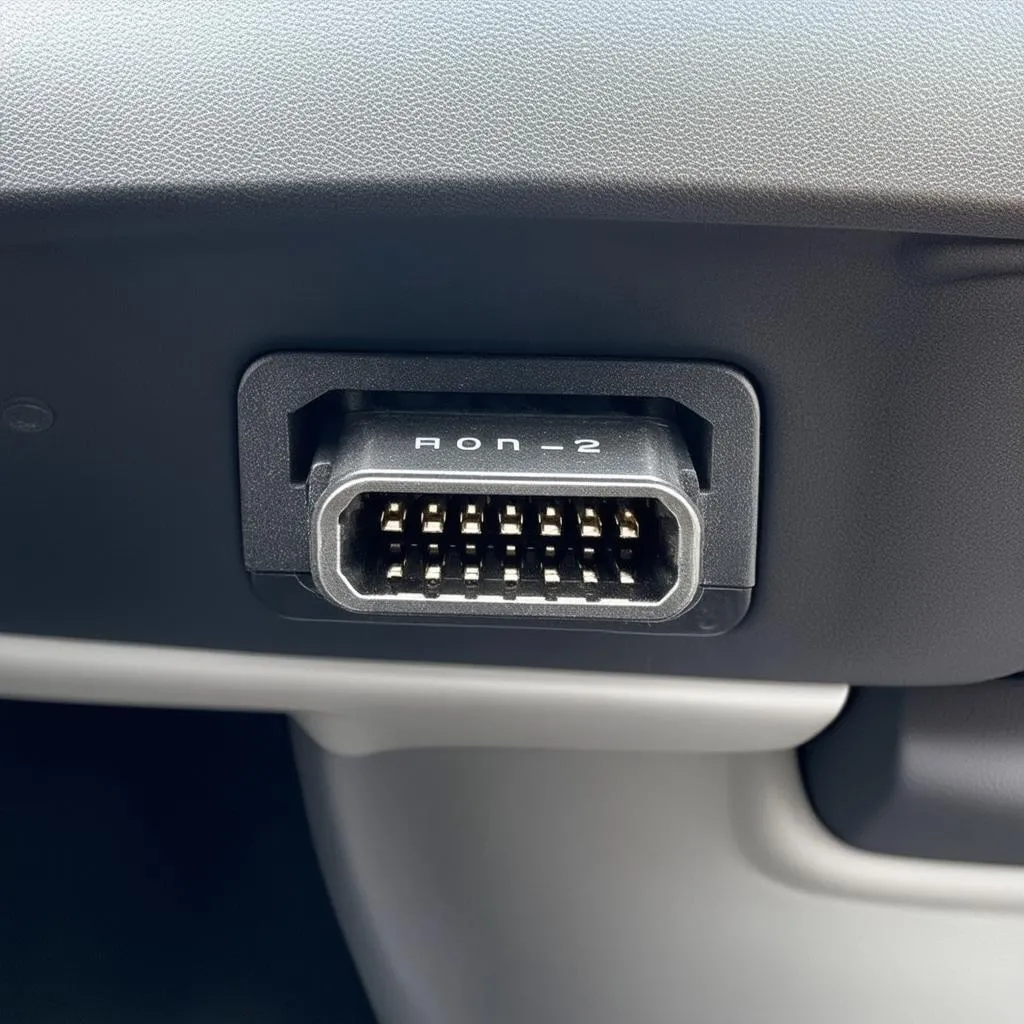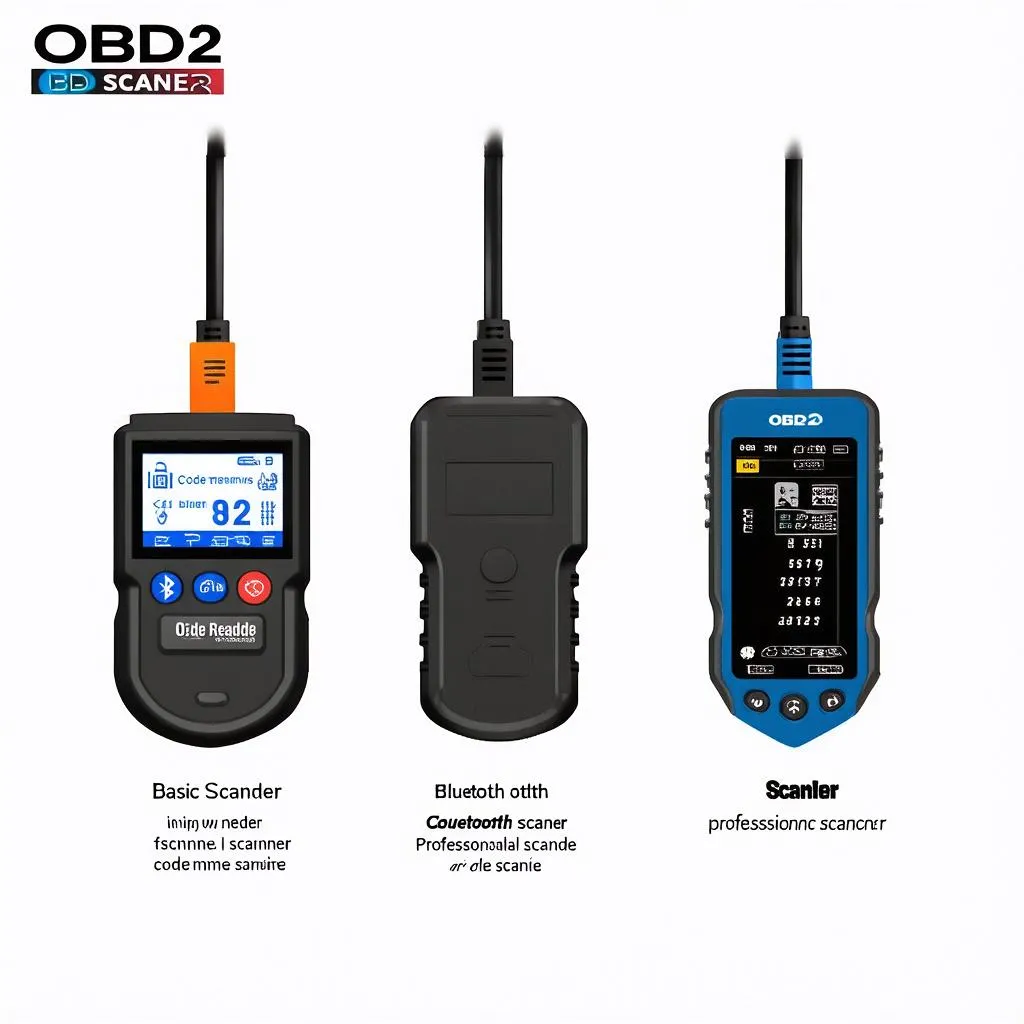“Check engine” light got you singing the blues? Don’t worry, we’ve all been there! Understanding your car’s inner workings might seem as mysterious as reading ancient runes, but that little portal known as the OBD2 port is your key to unlocking valuable information. Today, we’re diving deep into the world of the 2017 Honda Pilot OBD2 port, separating fact from fiction, and empowering you to take charge of your vehicle’s health.
What Exactly is This “OBD2 Port” Everyone’s Talking About?
Imagine a doctor being able to instantly diagnose what ails you with a simple connector. That’s essentially what the OBD2 port does for your 2017 Honda Pilot. OBD stands for On-Board Diagnostics, and this standardized port allows mechanics and DIY enthusiasts to communicate with your car’s computer system. Think of it as a direct line to your Pilot’s brain, relaying vital information about its performance.
Locating the Elusive 2017 Honda Pilot OBD2 Port
Now, where did Honda tuck away this magical portal in your Pilot? Fear not, it’s easier to find than you might think! Typically, the OBD2 port is located on the driver’s side, beneath the dashboard, somewhere between the steering wheel and the gas pedal. It’s usually a black or white rectangular connector with 16 pins.
 OBD2 Port Location
OBD2 Port Location
Why Should I Care About the OBD2 Port?
This unassuming little port holds immense power for 2017 Honda Pilot owners:
- Diagnose Engine Problems: From a sputtering engine to decreased fuel efficiency, connecting a scan tool to the OBD2 port can pinpoint the root cause of the issue.
- Reset Warning Lights: While it’s crucial to address the underlying problem, you can use the OBD2 port to reset warning lights like the “check engine” light once resolved.
- Monitor Performance: Want to keep tabs on your Pilot’s vital signs? The OBD2 port allows you to track metrics like fuel economy, engine temperature, and even your driving habits.
Choosing the Right OBD2 Scanner for Your 2017 Honda Pilot
Not all OBD2 scanners are created equal. You’ll find a wide range of options on the market, from basic code readers to advanced professional-grade scanners.
- Basic Code Readers: These affordable devices can read and clear basic engine codes, perfect for DIY enthusiasts who want to diagnose simple issues.
- Bluetooth Scanners: These handy devices connect to your smartphone or tablet, providing real-time data and allowing you to use diagnostic apps for a more in-depth analysis.
- Professional-Grade Scanners: As the name suggests, these are the big guns used by mechanics. They offer advanced features like live data streaming, bi-directional control, and access to manufacturer-specific codes.
Choosing the right scanner depends on your budget and technical expertise. For most 2017 Honda Pilot owners, a basic code reader or a Bluetooth scanner will suffice.
 Different Types of OBD2 Scanners
Different Types of OBD2 Scanners
A Word of Caution: The Feng Shui of Car Diagnostics
While the OBD2 port is a powerful tool, remember that technology is only as good as its user. Just as a cluttered space can disrupt the flow of positive energy in your home (Feng Shui, anyone?), tampering with your car’s systems without proper knowledge can lead to more harm than good.
Ready to Unlock Your 2017 Honda Pilot’s Secrets?
We hope this journey into the world of the 2017 Honda Pilot OBD2 port has been enlightening! Understanding this crucial component can empower you to take control of your car’s health and make informed decisions about its maintenance.
Need help with installing or using diagnostic software? Don’t hesitate to reach out to our team of auto experts via Whatsapp at +84767531508. We’re available 24/7 to assist you.
Looking for more insights into your 2017 Honda Pilot? Check out these related articles:
Drive safe and stay informed!